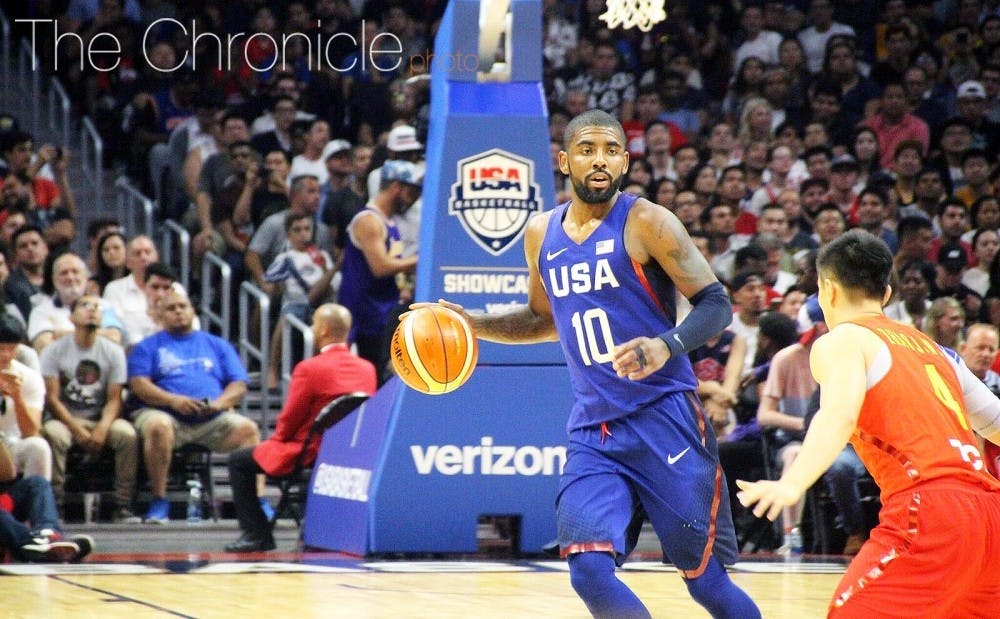In a year that has seen Russell Westbrook and James Harden captivate the eyes of the basketball world with two of the greatest regular seasons in NBA history, fans have had little to complain about.
But a black eye for the league this season—and one that will continue to sting if left unattended— has been a rampant spread of resting players, especially in nationally televised games.
With the exception of lockout seasons, the NBA has stuck to an 82-game schedule since 1967-68. Although it has become a matter of tradition, the number 82 is entirely arbitrary, with no underlying argument that makes it better than perhaps 76 or 66.
The regular-season resting strategy was once something people only believed head coach Gregg Popovich and the San Antonio Spurs used for older players. But more teams and coaches have turned to the plan this season, for both veterans and younger players, in an effort to manage minutes for star players and stay fresh for the postseason.
Although it undoubtedly crushes the souls of fans who purchase expensive game tickets to catch a glimpse of visiting stars, it’s hard to criticize teams that can afford to rest their stars for doing so. Injuries to some of the best players in the game, such as Kevin Durant this season or Marc Gasol and Anthony Davis last year, are capable of ruining entire seasons.
Perhaps the biggest supporters of the fan point of view have been a group of former players who managed lengthy careers even with 82-game seasons. But it’s hard to side with them if one considers how the game has changed.
The NBA’s deep pool of talent includes players bigger and faster than ever. If you disagree with this, take a moment to watch bigs like Davis, Karl-Anthony Towns and DeMarcus Cousins handle the ball on the perimeter like guards. The move away from isolation-heavy basketball means players are traveling farther distances on defense in an effort to rotate to a bevy of 3-point shooters.
With guards getting quicker and quicker seemingly by the year, the speed at which the game is played makes it almost hard to believe that more players haven’t gotten injured. Seriously, watch Westbrook go coast-to-coast five times a night and consider just how long he can do that without getting hurt. Putting players on the court more and more only increases the risk of these injuries happening.
Basketball is probably the only sport in which the stars of the game hold a voice that can truly resonate with the league office. If this is any indication, even future Hall of Famers such as Kobe Bryant and Dirk Nowitzki have voiced their support for shorter regular seasons. Mind you, these are two players that slogged through almost 20 seasons apiece realizing that the game and its demands on the body are entirely different today.
By both cutting between five and 10 games and stretching the regular-season by another week, the NBA could effectively prevent teams from playing on back-to-back nights or facing four games in five days—stretches that place a tremendous toll on even the most conditioned athletes’ bodies.
Even the thought of fewer games may cause revenue-hungry owners’ stomachs to churn. But shortening the regular season inherently increases the importance and interest of each game. With the best players on the floor instead of wearing their nicest street clothes, the level of competition and parity in the would increase—similar to how it reigns in the shorter 16-game NFL season.
Maybe the Warriors take a few extra games to clinch the best record in the league, or perhaps the Lakers wait 10 more games to begin tanking. With the league drowning in historic levels of cash and talent, now is not the time for the NBA to take a step back for the sake of a few million dollars—especially for an arbitrary tradition of 82 games.
The NBA is not alone in that it faces a major problem that could threaten the success of its product. In fact, it checks out as better than some of its counterparts.
The NFL is dealing with a concussion and player safety dilemma that has many reconsidering whether kids should even be playing the sport. The MLB has entered recent offseasons looking at pace of play measures after realizing that games can boring and take far too long for average fans.
Under the leadership of commissioner Adam Silver, the NBA has grown immensely in terms of revenue and popularity.
The league showed its willingness to go against tradition by adding advertisements to jerseys ahead of next season and it needs to do so again by shortening its regular-season schedule.
Get The Chronicle straight to your inbox
Signup for our weekly newsletter. Cancel at any time.

